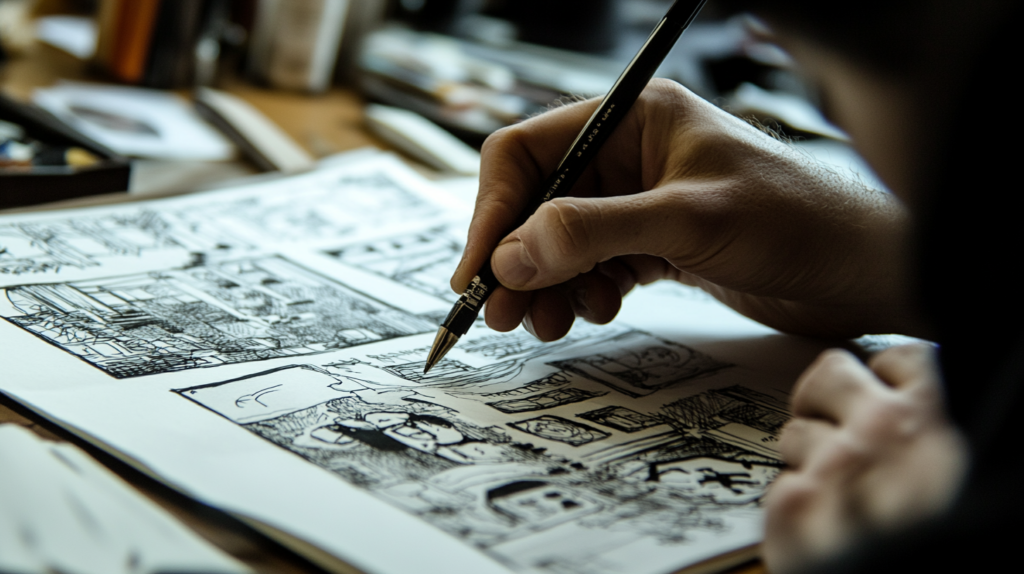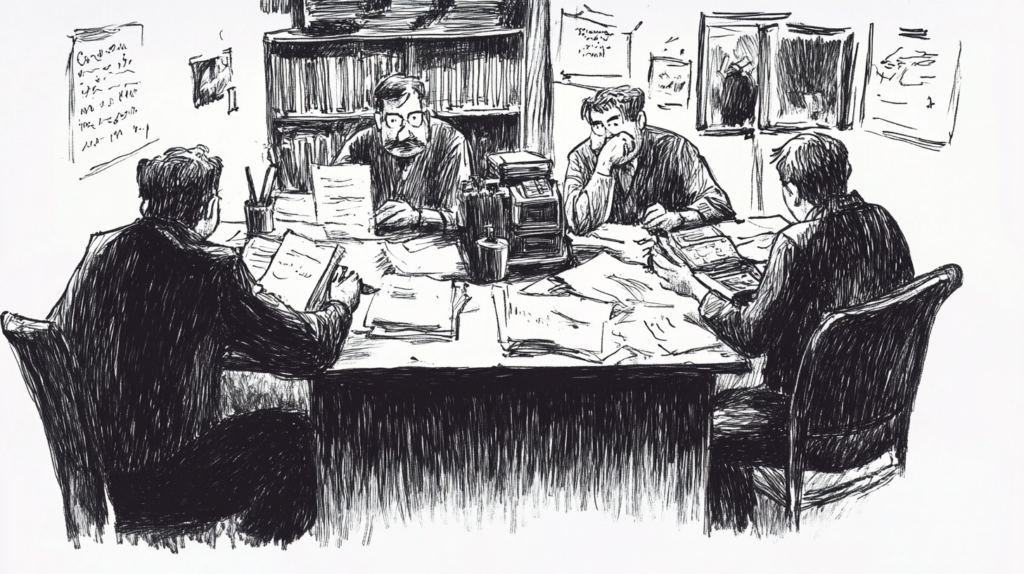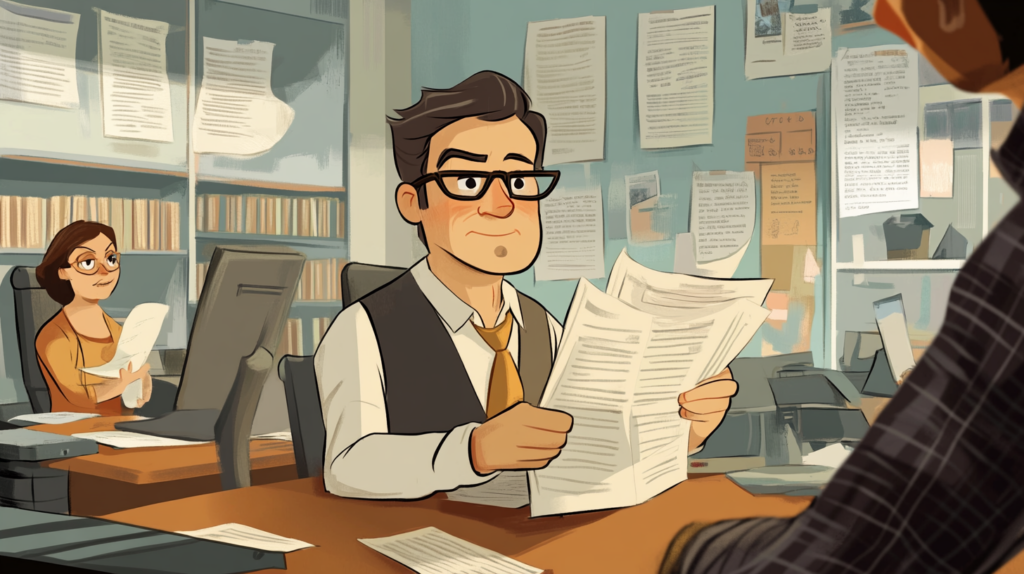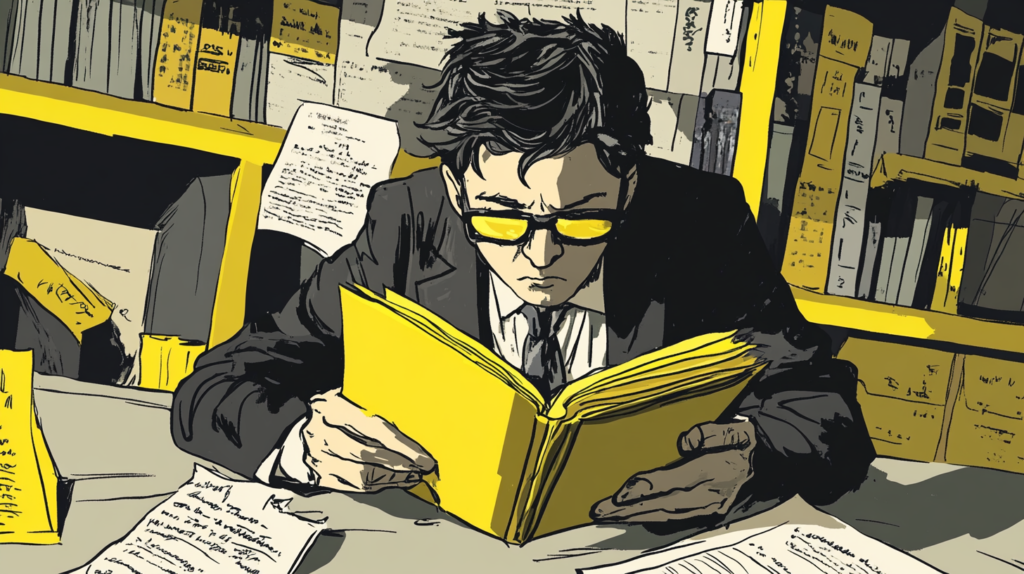Becoming a newspaper cartoonist can be a rewarding career for those with a passion for both art and commentary. Newspaper cartoonists play a unique role in the media, using humor, satire, and visual storytelling to comment on current events, politics, and social issues. Securing a job in this field requires a blend of artistic skill, a strong portfolio, and persistence. Here’s a step-by-step guide to help you navigate the path to becoming a newspaper cartoonist.
1. Develop Your Cartooning Skills
Master the Art of Caricature and Satire
- Caricature: Learn to exaggerate features of public figures to capture their likeness while emphasizing traits that suit the satirical tone of your cartoons. Caricature is a key skill for editorial cartoonists, especially when addressing political figures.
- Satire and Humor: Develop your ability to use satire and humor to convey messages. Newspaper cartoons often tackle serious issues in a humorous way, so understanding how to balance humor with critique is essential.
Understand Current Events
- Stay Informed: Regularly read newspapers, watch news programs, and follow credible online sources to stay updated on current events. The more informed you are, the better your cartoons will reflect timely and relevant topics.
- Diverse Perspectives: Understand multiple perspectives on political and social issues. This will allow you to create cartoons that are insightful and resonate with a broad audience.
Experiment with Styles
- Try Different Approaches: Experiment with various artistic styles to find what best suits your voice as a cartoonist. Some newspapers prefer a more traditional, detailed style, while others might appreciate a more minimalist or modern approach.
- Find Your Unique Voice: Developing a distinctive style and voice will set you apart from other cartoonists. This uniqueness is key to standing out when applying for newspaper jobs.

2. Build a Strong Portfolio
Select Your Best Work
- Variety of Topics: Your portfolio should include cartoons on a range of topics, from local issues to national or global events. This demonstrates your versatility and ability to comment on different subjects.
- Consistent Quality: Ensure that all the work in your portfolio is of high quality. It’s better to include fewer pieces that are strong and polished than to have a large portfolio with inconsistent work.
Create a Professional Presentation
- Organize by Themes or Styles: Organize your portfolio logically, perhaps grouping cartoons by theme, style, or type (e.g., political cartoons, social commentary, humor).
- Digital and Physical Versions: Have both digital and physical versions of your portfolio ready. The digital version can be shared easily via email or uploaded to a personal website, while the physical version is useful for in-person interviews.
Include a Personal Statement
- Artistic Vision: Include a brief personal statement or artist’s bio in your portfolio. This should explain your approach to cartooning, your influences, and what you aim to achieve through your work.
- Tailor to the Publication: When applying to specific newspapers, consider tailoring your portfolio to match the tone and style of that publication. Highlight pieces that align with the newspaper’s editorial voice.

3. Gain Experience and Build a Reputation
Start with Smaller Publications
- Local Newspapers: Begin by submitting your cartoons to local or regional newspapers. These smaller publications are often more open to new talent and can provide valuable experience.
- Magazines and Online Platforms: Consider contributing to magazines, online news outlets, or blogs. This helps you build a body of published work and gain exposure.
Enter Cartooning Contests
- Competitions: Many organizations and publications hold cartooning contests. Winning or placing in these competitions can significantly boost your profile and credibility as a cartoonist.
- Portfolio Enhancer: Awards and accolades from contests can be powerful additions to your portfolio, demonstrating your skill and recognition in the field.

Network with Other Cartoonists
- Join Associations: Consider joining professional organizations such as the Association of American Editorial Cartoonists (AAEC) or the National Cartoonists Society (NCS). These groups offer networking opportunities, resources, and industry connections.
- Attend Conferences and Events: Participate in cartooning conferences, workshops, and other industry events. These provide opportunities to learn from established cartoonists, gain feedback, and make connections that could lead to job opportunities.
Develop an Online Presence
- Social Media: Use platforms like Toons Mag, Cartoonist Network, Easybie, Twitter, Instagram, and LinkedIn to share your cartoons, interact with other cartoonists, and engage with followers. Social media can also be a way to attract attention from editors and publishers.
- Personal Website: Create a professional website that showcases your portfolio, provides contact information, and offers a brief bio. A well-maintained website acts as a digital business card and makes it easier for potential employers to find you.

4. Apply for Newspaper Jobs
Research Potential Employers
- Target Publications: Identify newspapers that align with your style and interests. Consider both traditional print newspapers and online publications, as the digital landscape continues to grow.
- Understand the Audience: Learn about the newspaper’s readership and editorial stance. Tailoring your application to show that you understand and can appeal to their audience will make your application stronger.
Prepare a Tailored Application
- Cover Letter: Write a compelling cover letter that highlights your experience, style, and passion for editorial cartooning. Explain why you’re interested in working for that particular newspaper and how you can contribute to their editorial team.
- Portfolio Submission: Follow the newspaper’s submission guidelines closely. Some may ask for specific formats, a certain number of samples, or links to your online portfolio.
Be Persistent and Patient
- Follow-Up: After submitting your application, consider sending a polite follow-up email after a few weeks if you haven’t heard back. This shows your continued interest in the position.
- Stay Open to Freelance Work: Even if you don’t land a full-time job right away, many newspapers hire freelance cartoonists. This can be a way to get your foot in the door and build a relationship with the publication.

5. Keep Improving and Adapting
Stay Updated on Trends
- Evolving Industry: The newspaper industry is constantly evolving, particularly with the shift toward digital media. Stay updated on industry trends, including the increasing importance of digital content and multimedia storytelling.
- Adapting Your Style: Be open to adapting your style or approach to fit new platforms or emerging trends. Flexibility is key in a changing industry.
Seek Feedback and Continue Learning
- Editor Feedback: If you’re fortunate enough to work with an editor, seek and value their feedback. Editors can provide insights that help you refine your work and better meet the needs of the publication’s audience.
- Continuous Improvement: Always look for ways to improve your craft. Whether through formal classes, online tutorials, or self-study, continuous learning will keep your skills sharp and your work relevant.

Expand Your Skillset
- Digital Cartooning: Familiarize yourself with digital tools and software, as many newspapers now prefer or require digital submissions. Learning how to create digital cartoons efficiently can expand your opportunities.
- Animation and Multimedia: Some newspapers and online platforms are integrating animated cartoons or multimedia elements into their content. Developing skills in animation or multimedia storytelling can make you more versatile and marketable.
Building a Career as a Newspaper Cartoonist
Getting a job as a newspaper cartoonist requires a combination of artistic talent, a strong portfolio, and perseverance. By honing your skills, building a network, and strategically applying to publications that align with your style, you can increase your chances of breaking into this competitive field. Remember that the journey may involve starting with smaller publications, taking on freelance work, and continually improving your craft. With dedication and persistence, you can achieve success as a newspaper cartoonist, making your mark in the world of editorial art and commentary.
Frequently Asked Questions: Getting a Job as a Newspaper Cartoonist
What qualifications or skills are needed to become a newspaper cartoonist?
- Artistic Talent: Strong drawing skills and a good sense of humor are essential for creating engaging and impactful cartoons.
- Creativity: Ability to generate original and relevant ideas for cartoons that resonate with readers.
- Understanding of Current Events: Knowledge of current events, politics, and social issues is crucial for creating timely and relevant editorial cartoons.
- Communication Skills: Strong written and verbal communication skills help in articulating ideas and collaborating with editors and other staff.
How can I build a portfolio to showcase my cartooning work?
- Diverse Samples: Include a variety of cartoon styles, subjects, and formats to demonstrate your versatility and range.
- Published Work: Feature any published cartoons, whether in print or online, to show that your work has been accepted and recognized.
- Personal Projects: Showcase personal projects that highlight your creativity and unique perspective.
- Professional Presentation: Ensure your portfolio is well-organized, professionally presented, and includes a strong introduction and artist statement.
What steps should I take to apply for a position as a newspaper cartoonist?
- Research Opportunities: Look for job openings in newspapers, both local and national, and on job boards or industry websites.
- Prepare Your Portfolio: Tailor your portfolio to the specific style and content of the newspaper you’re applying to.
- Craft a Cover Letter: Write a compelling cover letter that highlights your qualifications, experience, and why you’re a good fit for the position.
- Submit Your Application: Follow the newspaper’s application process, which may include sending your portfolio, resume, and cover letter via email or through an online submission system.
How important is networking in securing a job as a newspaper cartoonist?
- Networking: Building relationships with industry professionals, attending events, and joining cartoonist associations can provide valuable connections and opportunities.
- Social Media: Use social media platforms to showcase your work, engage with other cartoonists, and stay updated on job openings and industry news.
- Professional Associations: Join organizations such as the National Cartoonists Society (NCS) to connect with peers and gain access to resources and job listings.
What are some common challenges faced by newspaper cartoonists, and how can they be overcome?
- Deadline Pressure: Meeting tight deadlines can be stressful. Develop good time management and organizational skills to handle deadlines effectively.
- Editorial Revisions: Be prepared for revisions and feedback from editors. Flexibility and willingness to adapt your work are important.
- Competition: The field can be competitive. Continuously improve your skills, stay current with industry trends, and keep refining your unique style to stand out.
How can I gain experience and improve my chances of getting hired as a newspaper cartoonist?
- Freelance Work: Take on freelance cartooning assignments to build experience and gain exposure.
- Student Publications: Contribute to school or college newspapers and magazines to gain practical experience.
- Internships: Apply for internships at newspapers or media organizations to gain industry experience and make professional connections.
- Online Presence: Create a strong online presence by sharing your work on personal websites, social media, and cartooning platforms.
What are some ways to stay relevant and up-to-date as a newspaper cartoonist?
- Follow Trends: Stay informed about current events, trends, and cultural shifts to create relevant and timely content.
- Continuous Learning: Attend workshops, take courses, and study the work of other cartoonists to continuously improve your skills and knowledge.
- Engage with Readers: Pay attention to reader feedback and trends to understand what resonates with your audience.
What role does personal style play in getting hired as a newspaper cartoonist?
- Distinctive Style: A unique and recognizable style can help you stand out in a competitive field and attract the attention of editors and readers.
- Alignment with Publication: Ensure your style aligns with the tone and aesthetics of the newspaper you’re applying to, while still showcasing your individuality.
How can I handle criticism and rejection as a newspaper cartoonist?
- Constructive Feedback: View criticism as an opportunity for growth and improvement. Use feedback to refine your work and address areas for development.
- Resilience: Understand that rejection is a common part of the industry. Stay persistent, continue to develop your skills, and keep submitting your work.
What career prospects and opportunities are available for newspaper cartoonists?
- Full-Time Positions: Opportunities may include staff cartoonist roles at newspapers and media organizations.
- Freelance Work: Many cartoonists work on a freelance basis, providing cartoons to various publications and media outlets.
- Publishing: Opportunities exist in book publishing, comic strips, and online platforms for creating and publishing cartoon content.
- Editorial Work: Cartoonists can also contribute to editorial and commentary sections of publications, providing visual analysis and perspectives.
By understanding these aspects and preparing accordingly, aspiring newspaper cartoonists can enhance their chances of securing a job and building a successful career in the field.
This post was created with our nice and easy submission form. Create your post!




